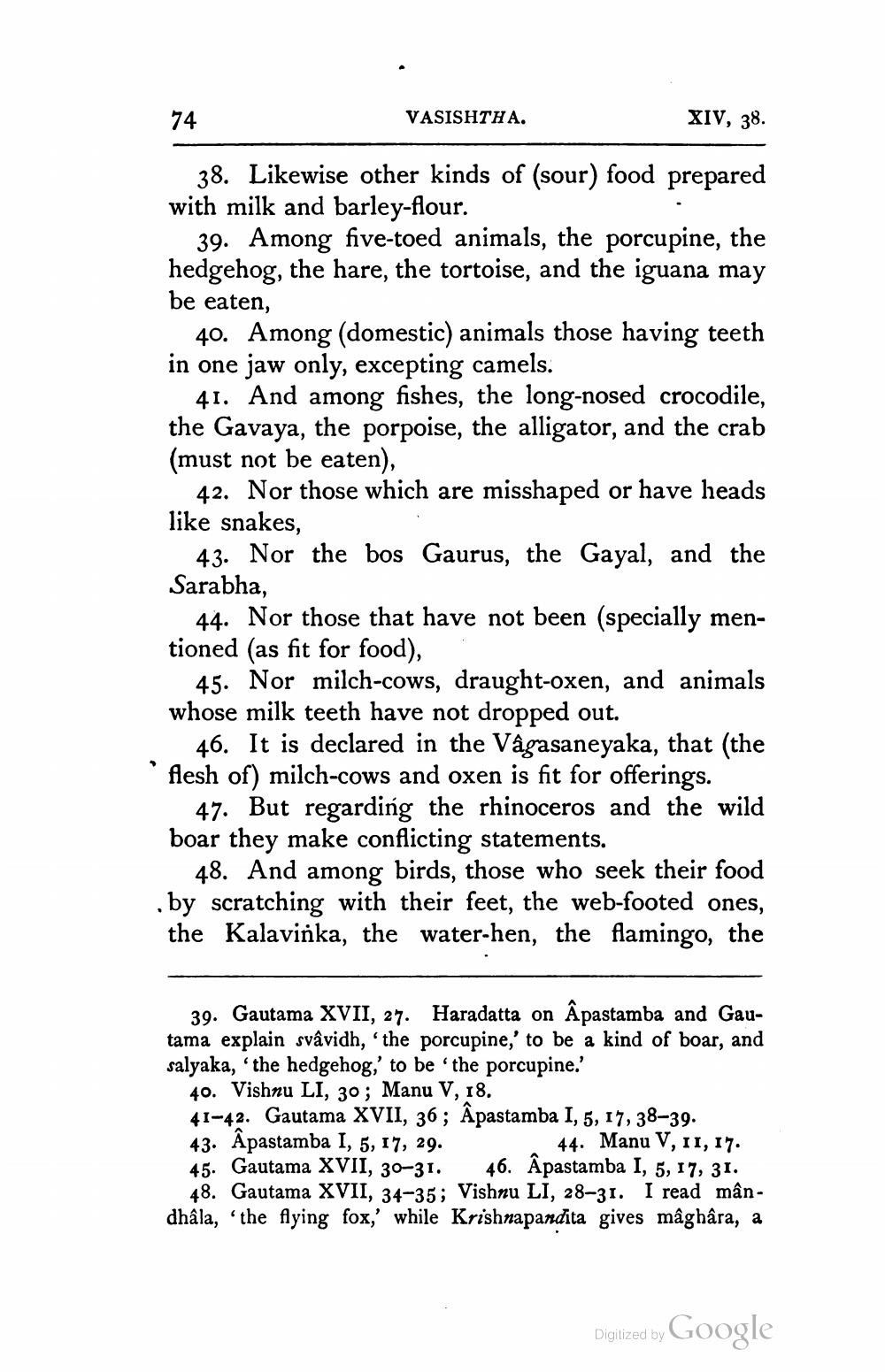________________
74
VASISHTHA.
XIV, 38.
38. Likewise other kinds of (sour) food prepared with milk and barley-flour.
39. Among five-toed animals, the porcupine, the hedgehog, the hare, the tortoise, and the iguana may be eaten,
40. Among (domestic) animals those having teeth in one jaw only, excepting camels.
41. And among fishes, the long-nosed crocodile, the Gavaya, the porpoise, the alligator, and the crab (must not be eaten),
42. Nor those which are misshaped or have heads like snakes,
43. Nor the bos Gaurus, the Gayal, and the Sarabha,
44. Nor those that have not been (specially mentioned (as fit for food),
45. Nor milch-cows, draught-oxen, and animals whose milk teeth have not dropped out.
46. It is declared in the Vagasaneyaka, that (the flesh of) milch-cows and oxen is fit for offerings.
47. But regarding the rhinoceros and the wild boar they make conflicting statements.
48. And among birds, those who seek their food by scratching with their feet, the web-footed ones, the Kalavinka, the water-hen, the flamingo, the
39. Gautama XVII, 27. Haradatta on Âpastamba and Gautama explain svâvidh, 'the porcupine,' to be a kind of boar, and salyaka, 'the hedgehog,' to be the porcupine.'
40. Vishnu LI, 30; Manu V, 18. 41-42. Gautama XVII, 36; Apastamba I, 5, 17, 38-39. 43. Âpastamba I, 5, 17, 29.
44. Manu V, 11, 17. 45. Gautama XVII, 30–31. 46. Âpastamba I, 5, 17, 31.
48. Gautama XVII, 34-35; Vishnu LI, 28-31. I read mândhâla, 'the Aying fox,' while Krishnapandita gives mâghára, a
Digitized by Google




